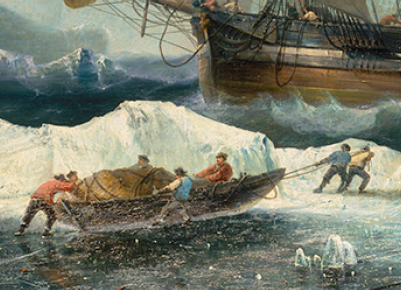The Man Who Ate His Boots
The book The Man Who Ate His Boots tells the fascinating story of expeditions that went wrong. The book examines the 19th century British search for a route to Asia via the Northwest Passage (a route that goes through the Arctic Ocean). Author Anthony Brandt describes the many attempts by both land and sea that ended in failure and tragedy, including the great 1845 expedition led by Sir John Franklin. Brandt shows how these brave, yet sometimes foolish, British explorers could have avoided starvation, frostbite and even death if they had copied the survival techniques of the local Inuit people. Some of the more surprising details the book reveals include:
CANVAS TENTS
The British, despite repeatedly watching the Inuit build igloos, insisted on using canvas tents. Tents freeze in sub-zero temperatures and give little insulation to anyone inside them. If the British had learned to build igloos, they would have been warm even in the worst Arctic weather.
CLOTHING
If the explorers had worn sealskin and furs like the Inuit, they wouldn’t have suffered from the frostbite which was common among the British but rare among the Inuit.
DOG TEAMS
Why didn’t the British use dog teams to pull their sledges? Hauling sledges themselves was a tradition among British explorers right into the early 20th century. It cost Scott and his men their lives on their return from the South Pole in 1912.
SALAD
The British did get something right, however, when Captain Edward Parry grew salad vegetables in boxes on board his ship. It was known that fresh vegetables and fresh meat prevented scurvy (a disease), although at that time the reason for this (vitamin C) had not been discovered. Parry’s men wouldn’t have been as healthy if they hadn’t eaten the salads.
And as you’ll find out if you read this great book, the ‘man’ of the title had to eat more than his boots in the end.

